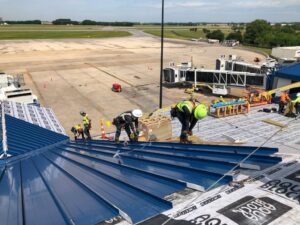Major Updates in Austin as City Council Passes Groundbreaking Environmental Policy
Austin, Texas – In a landmark decision aimed at fostering sustainable development, the Austin City Council passed an ambitious environmental policy late Thursday evening. The policy, which has been in the works for almost a year, seeks to lower the city’s carbon emissions by 50% by the year 2030. This new set of regulations marks a significant step forward towards creating a cleaner, greener future for Austin residents.
Key Aspects of the Policy
The new policy outlines several essential measures to be implemented over the next seven years. These include:
- Introduction of Strict Emission Standards: Industries within the city limits will now have to adhere to more stringent emission controls. Companies that fail to comply may face hefty fines and possible shutdowns.
- Promotion of Renewable Energy: The city plans to increase its reliance on renewable energy sources like wind and solar power, aiming to have renewable sources account for at least 60% of the city’s total energy consumption by 2030.
- Expansion of Public Transportation: To reduce the number of cars on the road, the city will expand its public transportation network, including the introduction of more electric buses and the enhancement of bike lanes.
- Green Building Initiatives: New buildings in Austin will be required to meet high sustainability standards. This includes the use of energy-efficient materials and systems, encouraging developers to construct environmentally friendly structures.
Community Reaction
Residents and environmental groups have broadly welcomed the new policy, viewing it as a crucial step in combating climate change. “This policy puts Austin at the forefront of environmental stewardship,” said one local activist. “It’s encouraging to see our city leaders taking the necessary steps to ensure a healthier environment for future generations.”
However, not everyone is pleased with the new regulations. Some business owners have expressed concerns about the financial burden these changes might impose on their operations. “While we support the move towards a greener city, the cost of compliance could be overwhelming for smaller businesses,” commented a local manufacturing business owner. There exists a palpable tension between the need for environmental protection and economic viability.
Implementation Timeline
The city will implement the new measures in stages, with the first set of regulations coming into effect starting January 2024. This gradual rollout aims to give businesses and residents ample time to adapt to the new requirements. Here are some key milestones:
- January 2024: Introduction of new emission standards for industries.
- June 2025: Launch of expanded public transportation routes and deployment of electric buses.
- December 2026: Mandate for new constructions to meet green building standards.
- July 2028: Targets for renewable energy sources to constitute at least 40% of the city’s energy consumption.
- December 2030: Aim to achieve the 50% reduction in carbon emissions.
Support and Future Plans
The City Council has also announced plans to allocate a significant portion of the municipal budget to support these environmental initiatives. The funds will be used for infrastructure upgrades, grants for businesses converting to renewable energy, and incentives for residents adopting eco-friendly practices.
Looking forward, the council is considering further steps to enhance sustainability. Potential future measures include increased investment in community gardens, stricter waste management regulations, and incentives for electric vehicle purchases.
In summary, Austin’s new environmental policy underscores the city’s commitment to sustainable development and carbon footprint reduction. The journey to a greener Austin has begun, and it will be interesting to see how these changes unfold in the coming years.







